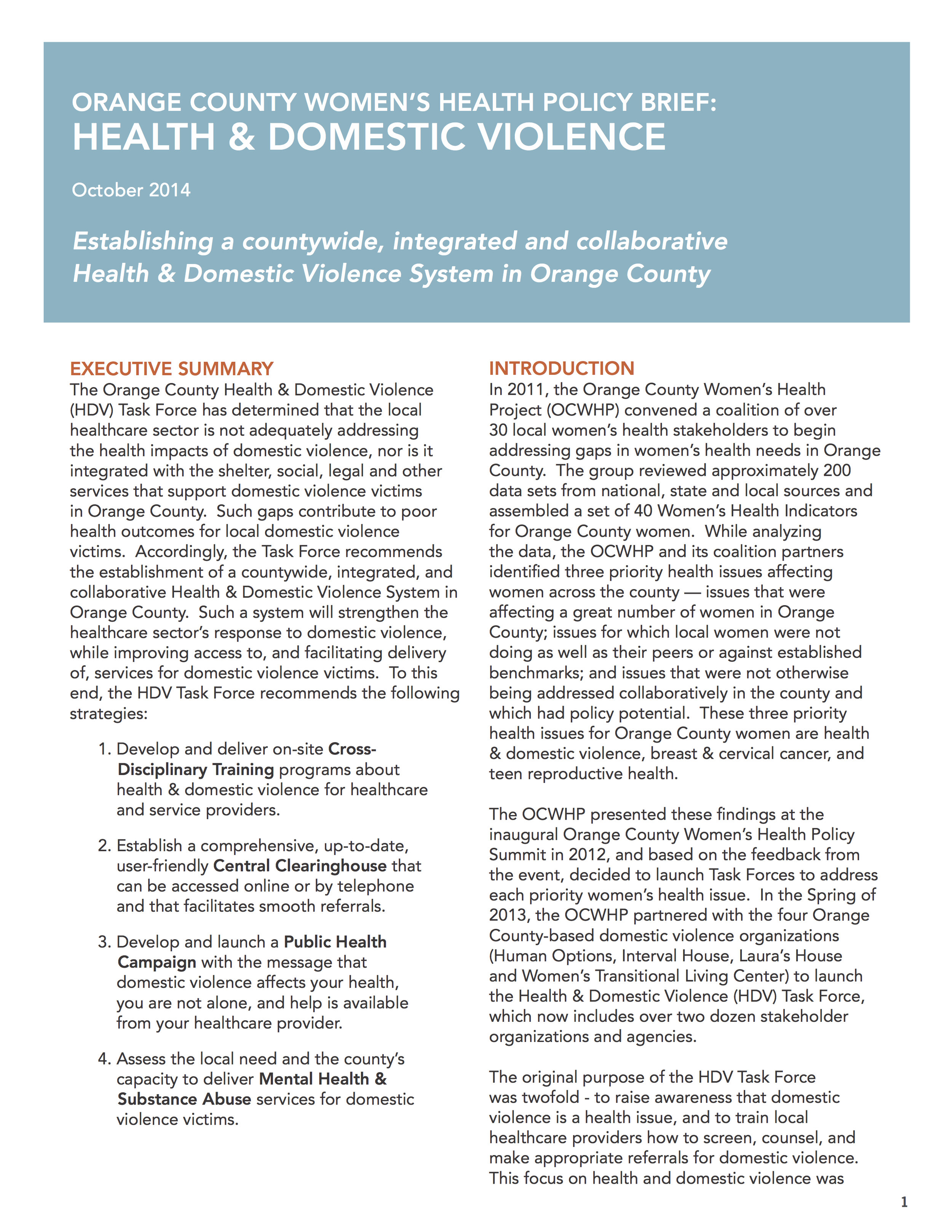OCWHP Publications
Orange County Women’s Health Update
The OC Women's Health Update (February 2021) highlights key health and COVID-19 disparities by gender and race/ethnicity in Orange County.
The OCWHP hopes this Update will help Orange County rebuild our healthcare systems to be more effective, efficient, and equitable – especially for women, low-income communities, people of color, the LGBTQ community, and other marginalized populations.
Comprehensive Sex Education Providers in Orange County (February 2021)
The OCWHP, in partnership with the OC STI Coalition, has updated a directory of Comprehensive Sex Education Providers in Orange County. This Update lists organizations that provide
direct CSE education to youth in various settings,
training on delivering CSE for educators, parents, professionals, and adults who work with youth, and/or
technical assistance about CSE. It also indicates which topics from the California Healthy Youth Act are addressed by each provider.
Overview of the DVHC-OC (2019)
The One Pager provides background on the vision and development of the DVHC-OC as well as significant achievements.
Executive Summary of the DVHC-OC (2019)
The Executive Summary shares findings from the DVHC Evaluation.
Intimate Partner Violence & Health Policy Briefs (2018)
The OCWHP participated in a statewide Intimate Partner Violence (IPV) and Health Policy Leadership Cohort facilitated by Futures Without Violence, which produced three policy briefs in September 2018.
Domestic Violence, Mental Health & Substance Abuse in Orange County Policy Brief (2017)
An analysis of the mental health and substance abuse service needs of domestic violence survivors in Orange County. This brief also issues three recommendations to bridge gaps in services and ensure that local survivors’ needs are being met.
Breast Cancer in Orange County Policy Brief (2014)
In Orange County, low-income women and women of racial/ethnic minorities are not getting screened for breast cancer at the recommended rates in Orange County(CHIS 2015). In addition, breast cancer has been the leading cause of cancer death among women age 20-39 years (OC Affiliate of Susan G. Komen 2009), and until late 2016, low-income women under 40 were not eligible for publicly funded diagnostic breast services. To make matters worse, Orange County does not have a county hospital, which would normally serve as a provider of last resort for low-income individuals.
Teen Reproductive Health in Orange County Policy Brief (2014)
Certain pockets of Orange County experience significantly higher teen birth rates than the county, state and even national averages (Annual Report on Conditions of Children in Orange County 2013). In addition, the combined cases of syphilis, gonorrhea and chlamydia nationwide hit an all-time high in 2015, and Orange County's percentage increase is the most significant of all Southern California counties. (Orange County Register, January 24, 2017, citing Centers for Disease Control and California Department of Public Health.) Indeed, the sexually transmitted infection (STI) rate among Orange County adolescents ages 10-17 has increased by 24% over the last decade, and young females had approximately four times the number of chlamydia cases as young males (Annual Report on Conditions of Children in Orange County 2013).
Health & Domestic Violence in Orange County Policy Brief (2014)
Consistent with state and national rates, 26.3% of Orange County women report having experienced physical or sexual violence by an intimate partner (CHIS 2009). Domestic violence causes significant short- and long-term health consequences for the victim and exposed children, imposes heavy costs on the healthcare system, and interferes with workplace productivity (ACOG Committee Opinion 2012). However, most of the major hospital and health systems in Orange County do not consistently screen or counsel for domestic violence, nor do they employ a consistent approach to referring patients for domestic violence services.
Cervical Cancer in Orange County Policy Brief (2014)
In Orange County, Hispanic women are dying at a higher rate (3.47 per 100,000) than their peers and the national rate (California Cancer Registry, CDC 2010), and fewer women of racial/ethnic minorities get screened compared to the county average (CHIS 2007). Moreover, HPV vaccination, which prevents most forms of cervical cancer, has yet to be fully utilized in Orange County.










